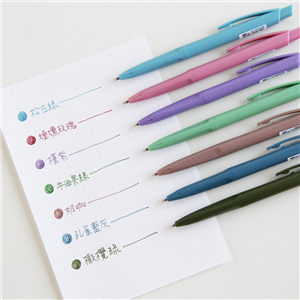 1收藏
1收藏

 二手徵求有驚喜
二手徵求有驚喜
定價:NT$ 1783
優惠價: 93 折, NT$ 1658
運送方式:超商取貨、宅配取貨
銷售地區:全球
訂購後,立即為您進貨




When the Chinese Nationalist Party nominally reunified the country in 1928, Chiang Kai-shek and other party leaders insisted that Nanjing was better suited than Beijing to serve as its capital. For the next decade, until the Japanese invasion in 1937, Nanjing was the “model capital” of Nationalist China, the center of not just a new regime, but also a new modern outlook in a China destined to reclaim its place at the forefront of nations. Interesting parallels between China’s recent rise under the Post-Mao Chinese Communist Party and the Nationalist era have brought increasing scholarly attention to the Nanjing Decade (1927–1937); however, study of Nanjing itself has been neglected. Charles Musgrove brings the city back into the discussion of China’s modern development, focusing on how it was transformed from a factional capital with only regional influence into a symbol of nationhood— a city where newly forming ideals of citizenship were celebrated and contested on its streets and at its monuments.
China’s Contested Capital investigates the development of the model capital from multiple perspectives. It explores the ideological underpinnings of the project by looking at the divisive debates surrounding the new capital’s establishment as well as the ideological discourse of Sun Yat-Sen used to legitimize it. In terms of the actual building of the city, it provides an analysis of both the scientific methodology adopted to plan it and the aesthetic experiments employed to construct it. Finally, it examines the political and social life of the city, looking at not only the reinvented traditions that gave official spaces a sacred air but also the ways that people actually used streets and monuments, including the Sun Yat-Sen Mausoleum, to pursue their own interests, often in defiance of Nationalist repression. Contrary to the conventional story of incompetence and failure, Musgrove shows that there was more to Nationalist Party nation-building than simply “paper plans” that never came to fruition. He argues rather that the model capital essentially legitimized a new form of state power embodied in new symbolic systems that the Communist Party was able to tap into after defeating the Nationalists in 1949. At the same time, the book makes the case that, although it was unintended by party planners who promoted single-party rule, Nanjing’s legitimacy was also a product of protests and contestation, which the party-state only partially succeeded in channeling for its own ends.
China’s Contested Capital is an important contribution to the literature on twentieth-century Chinese urban history and the social and political history of one of China’s key cities during the Republican period.
作者簡介:
Charles D. Musgrove is assistant professor of history at St. Mary’s College of Maryland.
退換貨說明:
會員均享有10天的商品猶豫期(含例假日)。若您欲辦理退換貨,請於取得該商品10日內寄回。
辦理退換貨時,請保持商品全新狀態與完整包裝(商品本身、贈品、贈票、附件、內外包裝、保證書、隨貨文件等)一併寄回。若退回商品無法回復原狀者,可能影響退換貨權利之行使或須負擔部分費用。
訂購本商品前請務必詳閱退換貨原則。影片僅供參考,實物可能因再版或再刷而有差異
 1收藏
1收藏

 二手徵求有驚喜
二手徵求有驚喜
優惠價: 93 折, NT$ 1658 NT$ 1783
運送方式:超商取貨、宅配取貨
銷售地區:全球
訂購後,立即為您進貨
When the Chinese Nationalist Party nominally reunified the country in 1928, Chiang Kai-shek and other party leaders insisted that Nanjing was better suited than Beijing to serve as its capital. For the next decade, until the Japanese invasion in 1937, Nanjing was the “model capital” of Nationalist China, the center of not just a new regime, but also a new modern outlook in a China destined to reclaim its place at the forefront of nations. Interesting parallels between China’s recent rise under the Post-Mao Chinese Communist Party and the Nationalist era have brought increasing scholarly attention to the Nanjing Decade (1927–1937); however, study of Nanjing itself has been neglected. Charles Musgrove brings the city back into the discussion of China’s modern development, focusing on how it was transformed from a factional capital with only regional influence into a symbol of nationhood— a city where newly forming ideals of citizenship were celebrated and contested on its streets and at its monuments.
China’s Contested Capital investigates the development of the model capital from multiple perspectives. It explores the ideological underpinnings of the project by looking at the divisive debates surrounding the new capital’s establishment as well as the ideological discourse of Sun Yat-Sen used to legitimize it. In terms of the actual building of the city, it provides an analysis of both the scientific methodology adopted to plan it and the aesthetic experiments employed to construct it. Finally, it examines the political and social life of the city, looking at not only the reinvented traditions that gave official spaces a sacred air but also the ways that people actually used streets and monuments, including the Sun Yat-Sen Mausoleum, to pursue their own interests, often in defiance of Nationalist repression. Contrary to the conventional story of incompetence and failure, Musgrove shows that there was more to Nationalist Party nation-building than simply “paper plans” that never came to fruition. He argues rather that the model capital essentially legitimized a new form of state power embodied in new symbolic systems that the Communist Party was able to tap into after defeating the Nationalists in 1949. At the same time, the book makes the case that, although it was unintended by party planners who promoted single-party rule, Nanjing’s legitimacy was also a product of protests and contestation, which the party-state only partially succeeded in channeling for its own ends.
China’s Contested Capital is an important contribution to the literature on twentieth-century Chinese urban history and the social and political history of one of China’s key cities during the Republican period.
作者簡介:
Charles D. Musgrove is assistant professor of history at St. Mary’s College of Maryland.
退換貨說明:
會員均享有10天的商品猶豫期(含例假日)。若您欲辦理退換貨,請於取得該商品10日內寄回。
辦理退換貨時,請保持商品全新狀態與完整包裝(商品本身、贈品、贈票、附件、內外包裝、保證書、隨貨文件等)一併寄回。若退回商品無法回復原狀者,可能影響退換貨權利之行使或須負擔部分費用。
訂購本商品前請務必詳閱退換貨原則。
※ 二手徵求後,有綁定line通知的讀者,
該二手書結帳減2元。(減2元可累加)
請在手機上開啟Line應用程式,點選搜尋欄位旁的掃描圖示
即可掃描此ORcode
|
||||||||||||||||||
|
||||||||||||||||||
|
||||||||||||||||||













